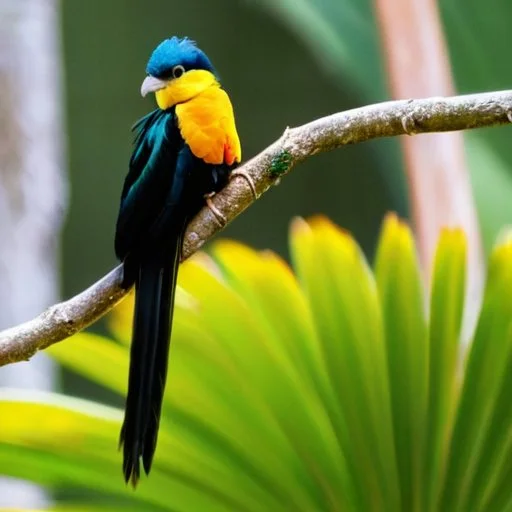Belize, a small but resilient nation in Central America, etched its name in the annals of history on September 21, 1981, as it broke free from the shackles of British colonial rule, embracing a new era of sovereignty and self-governance. This momentous occasion marked the culmination of centuries-long struggles against colonial oppression, as Belizeans rejoiced in their hard-won independence.
The roots of Belize's quest for independence can be traced back to the 18th century, when the Maya civilization first resisted Spanish colonization. As the British Empire expanded its influence, Belize became a British colony in 1862, sparking a century-long struggle for autonomy. The Belizean people, comprising a diverse mix of Maya, Garifuna, Creole, and Mestizo communities, repeatedly challenged British rule, demanding greater control over their affairs.
Two prominent leaders played pivotal roles in Belize's independence movement: George Price and Philip Goldson. Price, a former British Army officer, became the leader of the People's United Party (PUP) and was instrumental in negotiating Belize's independence. Goldson, a journalist and politician, co-founded the PUP and worked tirelessly to promote nationalist sentiments. Their dedication and perseverance inspired a nation to demand freedom.
Belize's independence marked a significant shift in the country's trajectory, as it transitioned from a British colony to a sovereign nation. The country gained control over its natural resources, economy, and foreign policy, paving the way for rapid modernization and development.
Belize's cultural heritage, shaped by its African, European, and indigenous roots, flourished with independence. The country's vibrant music, art, and cuisine, which blends Garifuna, Creole, and Maya influences, became an integral part of its national identity.
"We, the people of Belize, have come a long way in our struggle for independence... Today, we stand tall, proud, and free." – George Price, first prime minister of Belize
On that fateful day, Belizeans from all walks of life gathered in the capital city, Belmopan, to witness history unfold. Many still recall the emotional scenes, as tears of joy flowed and the national anthem was sung with renewed pride.
Belize's independence served as an inspiration to other nations fighting for self-determination, demonstrating that even the smallest of countries can achieve greatness through perseverance and unity.
From the earliest struggles against colonialism to the joyous celebrations of independence, Belize's story is one of resilience and determination. This visual timeline captures the essence of the country's journey to freedom.

Did you know that Belize is home to the largest barrier reef in the Western Hemisphere, a stunning natural wonder that attracts tourists from around the world?
Belize's independence is a testament to the power of the human spirit, a beacon of hope for generations to come. As we reflect on this momentous occasion, we honor the courage and perseverance of the Belizean people, who dared to dream of a brighter future, free from colonial shackles.
George Price, the first prime minister of Belize, played a pivotal role in the country's struggle for independence. Born in 1919, Price was a former British Army officer who became disillusioned with British colonial rule. He joined the People's United Party (PUP) and quickly rose through the ranks, becoming the party's leader in 1956.
Price's leadership and negotiation skills were instrumental in securing internal self-government for Belize in 1964. He continued to push for full independence, and his efforts finally paid off on September 21, 1981, when Belize gained independence from Britain.

Novemeber 19th is a significant date in Belizean cultural heritage, commemorating the Garifuna Settlement Day. This celebration honors the arrival of the Garifuna people, a mix of African and indigenous Carib populations, who arrived in Belize in the early 19th century.
The Garifuna people brought with them their rich cultural traditions, including music, dance, and art. Their arrival had a profound impact on Belizean culture, which is reflected in the country's vibrant music, art, and cuisine.
Belize's independence had a significant impact on the country's economy. With control over its natural resources, Belize was able to negotiate better trade agreements and attract foreign investment.
The country's tourism industry, in particular, benefited from independence, with the government investing heavily in infrastructure and marketing efforts to promote Belize as a tourist destination.
The economic growth and development that followed independence enabled Belize to reduce its dependence on foreign aid and improve the standard of living for its citizens.

The British Honduras Colonist, a newspaper published in Belize from 1865 to 1925, played a significant role in the country's independence movement.
The newspaper served as a platform for nationalist sentiments, publishing articles and editorials that called for greater autonomy and eventual independence from Britain.
Archival records of the newspaper provide valuable insights into the thoughts and feelings of Belizeans during this period, offering a unique perspective on the country's struggle for independence.
Belize's independence was influenced by the regional geopolitical context. The country's location in Central America, bordered by Mexico and Guatemala, made it a strategic player in regional politics.
The Cold War era saw a rise in tensions between the United States and the Soviet Union, with both powers vying for influence in the region. Belize's independence was, in part, a response to these external pressures.
The country's independence also had implications for regional organizations, such as the Organization of American States, which welcomed Belize as a new member in 1981.